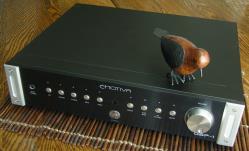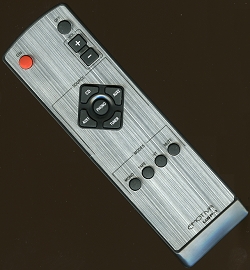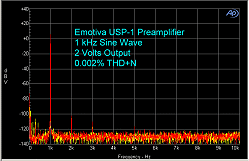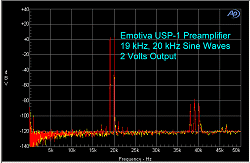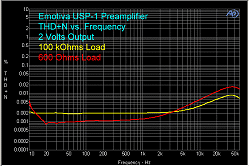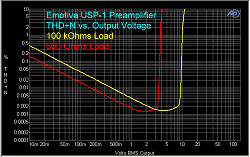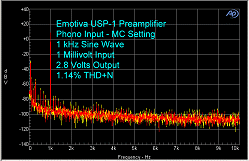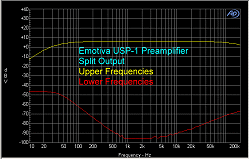Introduction
Emotiva is an A/V brand well-known to all of us who are dollar-concious (and in this economy, that’s a lot of people, including me). As such, we search out products that look good, sound good, are well-built, and don’t have our Mastercard® refuse the charge because it is over our limit. That doesn’t mean we expect everything, such as 1/2″ thick brass face plates and fully balanced outputs. We just want a good value. Something that gives a little more than we might otherwise expect for the price.
That’s Emotiva.
Specifications
- Design: Solid-State Stereo Preamplifier
- Inputs: 5 Pairs RCA Unbalanced, Tape Monitor, HT
- Maximum Power Output: 9 Volts RMS
- MFR: 5 Hz – 80 kHz, ± 0.05 dB
- THD+N: 0.005%
- Input Impedance: 47 kOhms
- Dimensions: 3.75″ H x 17″ W x 14″ D
- Weight: 14 Pounds
- MSRP: $399 USA
- Emotiva
We have reviewed several of their products, which includes speakers as well as electronics.
The subject of the current review is their new USP-1 Stereo Preamplifier.
The Design
The front panel is very simple. Each function has its own button. Inputs include CD, Phono, Tuner, Aux 1, and Aux 2. You can also select Mono, the Tape Monitor, HT Bypass (lets you bypass the USP 1 and send the signal to your SSP instead), and Mute. The volume control is a rotary dial that operates a potentiometer.
Besides the standard full-range outputs, this preamp offers a split output where you can adjust the low-pass frequency for one (which goes to your subwoofer) and the high-pass frequency for the other (which goes to your main power amplifier). This allows you to essentially bi-amplify, and with the low frequencies removed from the high-passed output, your power amplifier will run more efficiantly, not having to waste power on low frequencies that your speakers cannot reproduce. And, they toss in a phono stage that has both MC and MM settings. This may mark the beginning of phono stages being a standard part of stereo preamplifiers, rather than having to purchase an outboard phono stage. Long live LP’s! Oh, there’s a headphone jack too.
You can see on the rear panel photo above that the full-range output jacks are situated next to the split-output jacks, and that the low-pass (for the subwoofer) offers both an RCA unbalanced as well as an XLR balanced output. The low-pass output combines both channels and comes from an op-amp, while the high-pass output is the main preamplifier output stage with a filter.
For the phono stage, there is a switch for using either an MC or an MM cartridge. MC cartridges have low output (often less than 1 millivolt), so the basic difference between the MM and MC circuits is an additional gain stage for the MC circuit. The MM input has an impedance of 47 kOhms, which is standard, while the MC input’s impedance is 240 ohms. One advantage of outboard phono stages is that they have settings to vary the load impedance, which is for the purpose of matching the optimum load impedance for a specific cartridge.
The remote control is small, but has all the necessary controls, such as power on/off, input selection, and volume control.
The AC receptacle is two-pronged (not grounded). You have to power-on with a toggle on the rear panel, which puts the unit into standby, and you then turn the unit on for use by pressing the Standby/Power button on the front panel.
In Use
I tested the USP-1 with a Marantz SA-7S1 SACD player, VPI HR-X turntable with Sumiko Blackbird MC cartridge, McIntosh MC-1201 power amplifiers, and Carver Amazing Mark IV ribbon speakers. Cables were Legenburg.
Frankly, I was amazed at the performace of this < $400 preamplifier. There was plenty of output to drive my power amplifiers as loud as I wanted, and the sound was always clean, without midrange congestion, or being overly sibilant.
Some might wonder if anyone would pair an inexpensive preamp with power monoblocks that cost $8,000 each, but if you have spent that money on the power amps, and $7,000 for the SACD player, mucho dinero on the cables . . . .
Ah, well then, $399 to finish off the system starts to sound pretty good, doesn’t it? If the product performs beautifully, why not save some money?
I think we are all at a stage now where we are walking on a fence. On one side is our ego, our pride, that feeling of “mine cost more than yours” sort of thing. On the other side are products sprouting up everywhere that are engineered here and built over there, for about as much money as you might be carrying in your wallet right now (OK, if you are on vacation somewhere).
I enjoyed many of my favorite SACDs (I often play CDs from my media PC, but not this time).
The Los Angeles Guitar Quartet (LAGQ) provides almost continual tests for transient demands, as the plucking of a guitar string has such transients at the beginning of the “twang”. With its 9 volt swing, the USP-1 gave me everything that was on the recording. I use MC-1201’s with their 1,200 watt rms output for a reason. Transients can often cause a 50 watt average suddenly to go to hundreds of watts. The meter needles on the Mc’s were really moving around.

Â
The Manhattan Transfer has been around awhile, and you might be labeled a “geezer” if you listen to their recordings, and I’m a geezer, so I listen to them. What I find missing in modern rock music is a melody that you can hum when the track is finished. This is a great SACD, and the USP-1 gave me what I wanted: MUSIC! Never harsh, never too much sibilance, never strained.
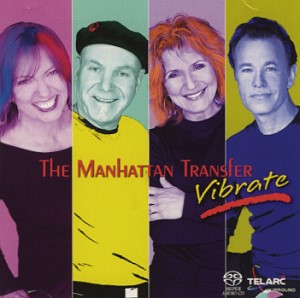
Â
Baroque music represents my favorite period of classical music. I use it for background listening when I am reading the newspaper or magazines in the evening. Ironically, it is because most Baroque music doesn’t leave you with a melody playing in your head that I like it. There is no distraction from my reading. I really enjoyed the clarity of the period instruments on this disc played through the USP-1.

Â
One of the reasons I like Telarc discs is that they don’t compress the music. That’s another complaint I have about modern rock recordings. They are so compressed, there are no dynamics. The loudness is the same throughout the disc, and it is always loud. Anyway, Telarc doesn’t do that, and it would certainly ruin classical recordings if they did. This orchestral set has the full symphony playing at all levels of dynamics, and the USP-1 was up to the task. The fact that it will output (a.k.a., “swing”) 9 volts is important, because you might be using 0.5 volt on average, but along come those darn transients, and “boom”, you need the ability to raise that output voltage significantly for a very short time. The USP-1 can do.
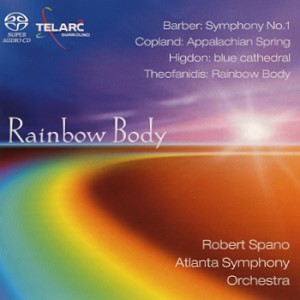
Â
I fired up my VPI HR-X turntable with its Blackbird cartridge, set the switch on the USP-1 to MC, put on some John Coltrane, and sat back. I think having the phono stage inside the chassis with the main preamp helps with the noise situation, because with an outboard phono stage, you have an extra set of RCA cables coming from the phono stage output to the preamp. I basically liked what I heard here, but I prefer my outboard Manley Steelhead because I can fine tune the loading impedance which does change the sound a bit.
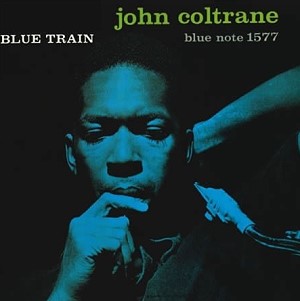
On the Bench
OK guys, here is where you are going to be amazed.
All distortion measurements were made within an 80 kHz bandwidth, both channels driven, 100 kOhms load, except where noted. For graphs 1, 2, 3, 7, and 8, the left channel is the yellow line and the right channel is the red line. I set the volume control to maximum and adjusted the input signal level to obtain specific output voltages.
At 1 kHz, the second and third harmonics were visible, but nothing beyond that. Distortion was a very low 0.002%.
Â
With a combination input of 19 kHz and 20 kHz sine waves, the 1 kHz B-A was more than 100 dB below the fundamentals, and there were some harmonics in the out-of-band (beyond the audible band) region.
Â
IMD was also very, very low.
Â
THD+N vs. Frequency is shown below, both for 100 kOhm loads and 600 ohm loads. Notice that even with the torture of a 600 ohm load (for a typical power amp, the load would be 10 kOhms up to 100 kOhms), distortion did not go above 0.02% all the way out to 50 kHz. Within the audible band and a 100 kOhm load, distortion stayed below 0.005%. The slight upward trend, starting at about 2 kHz, gives the sound a slight snap to it. In fact, with a high-end preamplifier, this line might be flat, and some consumers don’t like that, saying that the sound is “dry”. In any case, this is good performance for any preamplifier, let alone one that costs $399.
Â
The THD+N vs. Output curves show that the USP-1 delivered 10 volts rms into a 100 kOhm load at clipping (1% THD+N). It output 9 volts at 0.003% distortion. Using a 600 ohm load, the output was 3.4 volts at 0.002% distortion, before rising to clip at 3.8 volts.
Â
The measured frequency response was 10 Hz – 100 kHz, – 2 dB. The interesting thing here was that with a 600 ohm load, the frequency response at the extreme high end was slightly better. First time I have seen this happen.
Â
I measured the distortion and noise in the phono stage by inputting a 1 kHz sine wave at 1 mv for the MC test and 4 mv for the MM test. The results are shown below. You can see that the noise level dropped considerably with the MM setting. That is because there is no extra gain stage in that circuit. MC cartridges have very low output, except for a few noteworthy exceptions like the Sumiko line, and when you try to amplify 1 mv all the way up to 20 volts (50 watts into an 8 ohm speaker), noise is a huge factor. In fact, here, the larger THD+N value for the MC setting is actually due to it simply having more noise, rather than more distortion than the MM setting. In any case, there were no noticeable harmonic peaks.
Â
I also measured the frequency response in the split outputs, setting the control dials all the way counter-clockwise. You can see that the rolloff was complementary between the high-pass output and the low-pass output, which is where one would set it for use with a subwoofer. The output of the low-pass is lower than the high-pass output because the high-pass output goes to a power amplifier input, while the low-pass output goes to the input stage of a subwoofer amplifier, which is a preamplifier. I would have liked to see about 1 volt output from the low-pass output though. Having such a low output means you won’t have much room to work with on the subwoofer volume control.
Conclusions
The Emotiva USP-1 stereo preamplifier is a delightful surprise. It performs far beyond its cost, and this is testament to the design skills of Emotiva’s engineers. I also consider this a major step forward in the image that “Made in China” has. Even if the US economy were not in trouble, Emotive would sell a boatload of these preamps, and I suspect that, things being the way they are, maybe two boatloads.



